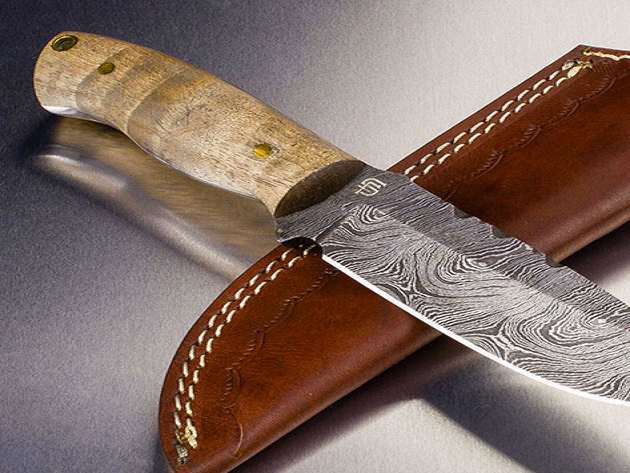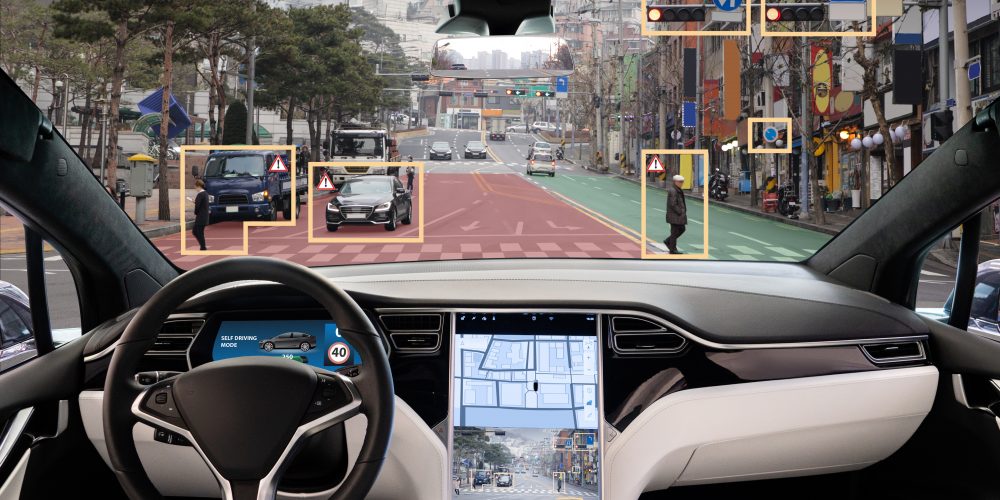Recent Posts
What is 5G Technology?
 You may have heard the term 5G being thrown around lately. If you are a bit confused, don’t worry, we’ll give you a quick overview. 5G represents the fifth generation mobile network, meaning the way our cell phones communicate with each other and the internet. 5G is going to be a major step up from what most of us currently use: 4G. 5G has the potential to not only interconnect people, but to interconnect and manipulate objects, machines, and devices, that we currently cannot. The performance and efficiency increases will be huge when 5G is adopted, and enabling new user experiences and contact with different industries.
You may have heard the term 5G being thrown around lately. If you are a bit confused, don’t worry, we’ll give you a quick overview. 5G represents the fifth generation mobile network, meaning the way our cell phones communicate with each other and the internet. 5G is going to be a major step up from what most of us currently use: 4G. 5G has the potential to not only interconnect people, but to interconnect and manipulate objects, machines, and devices, that we currently cannot. The performance and efficiency increases will be huge when 5G is adopted, and enabling new user experiences and contact with different industries.
5G’s Benefits
5G is going to be such a major step it, it is essentially a new network. It will not only enhance the world’s mobile broadband experiences, but it will enable connections with previous unconnected devices, objects, and networks. For example, you may be able to control a number of objects around your home such as your refrigerator, sink, and lights via your phone, and they will be able to communicate to each other. The performance and efficiency improvements will be enormous. Qualcomm even asserts that 5G’s power will be as transformative as the automobile and electricity.
Studies predict 5G’s full economic benefit won’t be fully realized until 2035, and it’s widespread benefits could produce up to $12 trillion worth of goods and services. Companies that directly support the 5G network, such as phone manufacturers, content creators, telephone companies, app developers, and consumers, could generate $3.5 trillion alone in revenue, and support 22 million new jobs.
Where will 5G Be Used?
Here are some of the specific areas that will be take advantage of 5G:
- Enhanced mobile networks – Not only will our smartphones operate faster than ever, but it will enable new virtual and augmented reality experiences. Data costs and latency will also go down, but if your device isn’t 5G compatible, don’t go throwing it out in a cheap dumpster rental yet! There may be some value to selling your phone, check online for some prices, or see what they are going for on Craigslist.
- Internet of Things – 5G will allow manufacturers to embed massive amounts of sensors into all kinds of devices, permitting data rates to plummet, and for devices to communicate to each other in new ways.
- Rapid Communication – 5G will enable low-latency, high broadband data communication in high-impact industries, such as transportation, medicine, and the military.
- Forward Compatibility – Since this technology is just being rolled out, we still don’t fully know the impact it will have on our economy, and our world. It’s likely that there are many benefits that we don’t yet realize.
5G Summary
5G is going to provide much faster data transfers that 4G, with speeds of up to 20gb/s. That’s like download an entire movie in only a few seconds. But besides being fast, the 5G network will have a massive increase in network capacity, and less latency, allowing new devices to connect to the network, and improving communication times between all devices. The expected benefits of 5G are huge, and there will likely be more that we don’t even know about to expect.
What Are Steel Knives Made Of?

At its simplest form, steel is just a mixture of iron and carbon that make this uniquely strong alloy. However, modern techniques add small bits of other elements that keep the steel sharp, maintain its edge, and prevent rust.
Making a good steel knife is a delicate balancing act. If you make the knife exceptionally hard it will retain its edge well, but it will be prone to breaking or chipping. If you attempt to make it corrosion-proof, it will likely be too soft and have a weak edge. If you want the best quality steel with no weaknesses, that will be very expensive.
Knowing that there are benefits and drawbacks to emphasizing one characteristic of the blade over another, steelmakers have become adept at adding different alloys and compounds to steel to change its properties. For example, while carbon is the primary element that turns iron into steel, adding more carbon increases the “hardness” of the blade. It also improves the blade’s wear resistance, edge retention, and tensile strength. Adding too much carbon can make the blade brittle however, so be careful.
Adding chromium to steel increases its resistance to corrosion, with steel being made of 13% or more of chromium being referred to as “stainless.” Chromium also combines with the carbon in the blade to create carbides, which increase the tensile strength and edge retention of the blade. Similarly, adding vanadium to the blade creates a very hard form of carbide that increase the wear resistance of the blade. Modern steel blades often contain significant amounts of vanadium.
Carbides are basically small, very hard particles that form when the elements are melted together to form the steel. These carbides are even stronger than the base steel itself, and can be seen on the blade if you look closely. Traditionally, steel is made by combining all the elements with carbon and iron, melting them down, and then pouring the hot liquid into a mold. After the steel cools, it is called an alloy, and you have your knife. The only drawback to this method is that the different particles in the steel cool unevenly, creating carbides that are not consistent in shape or size. A more modern way of cooling the steel is to blast it with a cool gas that instantly cools the steel down, and then applying pressure to the alloy. This results in a more even distribution of the carbides, and one mean blade!
Since knives are so dangerous, it’s important to properly dispose of them. If you just throw it in the trash, it could easily rip through the bag! The proper way to dispose of a knife is to wrap it in bubble wrap, newspaper, or cardboard, and tie it to a knife with a zip tie, small cord, or masking tape. To be even safer, put the knife in a cardboard box and then throw it out. But you don’t NEED to throw it out. If the blade is dull, you can take it to a knife sharpener or buy one from the store yourself. If you want to recycle it you can visit your local recycling center, just call ahead to make sure that they accept metal. If you have any more questions about proper disposal methods, just ask Lakeland Dumpster Rental, who would be happy to answer any questions you may have.
How do Self-Driving Cars Work?
No, this isn’t the future. Car companies such as Tesla have actually made it possible for our cars to start driving themselves, albeit they still require some human intervention. Also known as autonomous cars, a self-driving car is a vehicle that is able to sense its environment and operate without human involvement. At peak performance, a self-driving car should be able to go anywhere a traditional car can go and do anything that an experienced human driver can.
It’s important to know that the Society of Automotive Engineers (SAE) has developed a spectrum of driving automation, with 6 different levels. The levels range from 0-5, with 0 meaning full human operation of the car, and level 5 representing a vehicle that conducts all driving task under any and all conditions, requiring zero human input.
So, How Do They Work?
In a nutshell, autonomous cars use sensors, actuators, machine learning, radar, and software to create a map of their surroundings and navigate through them. Video cameras are used to see traffic lights, road signs, pedestrians, and other vehicles, while Lidar (meaning light detection and ranging) sensors use pulses of light to measure distances, detect road edges, and understand lane markings. Additionally, the wheels are equipped with ultrasonic sensors to detect other vehicles and curbs when parking.
Advanced software in the car processes all this sensory input, creates a path, and then sends signals to the car’s actuators to control the car. The car then brakes, accelerates, and steers accordingly. There are also rules “hard-coded” into the car, obstacle avoidance algorithms, and object recognition software that helps the car avoid accidents and stay on course.
The Future of Self Driving Cars
It’s clear that creating a self-driving car is a monumental task. Besides the sheer complexity of creating one, there are a number of challenges that must be considered:
- Lidar is expensive to include in cars and having many cars with lidar on the road might interfere with eachother’s sensors.
- Manufacturers are still trying to figure out how to handle bad weather. For example, if there’s snow on the road, how will the car know where the lane markings are?
- When an autonomous car gets into an accident, who will be held liable, the manufacturer, or the driver? What if there’s no way for the driver to take manual action over the vehicle?
Despite these challenges, the benefits to have autonomous cars on the road would be huge. Besides the added level of convenience, free time, mobility, and quality of life benefits, autonomous cars would actually greatly reduce CO2 emissions. This is because if autonomous cars, ridesharing, and electric vehicles become widespread, there would be many fewer cars on the road, as the autonomous cars would be able to efficiently transport people using fewer vehicles. Needless to say, many organizations around the world are working diligently towards a future where we may never need to use a steering wheel again.

The New Nintendo Switch Lite: Helpful Tips for Owners
When the Nintendo Switch came out, it made huge waves for offering a premium gaming experience both on-the-go, and plugged into a TV. Now Nintendo has released the Switch Lite, and if you’re a new owner of one, congratulations! The Switch Lite has most of the features of the regular Switch, with some key differences. Let’s dive in.
- Switch vs Switch Lite Downsides
While the Switch Lite can play most of the same games as a full-sized Switch and can access the same accounts, there are a few differences worth noting. Some of the biggest differences are that the Switch Lite has no Joy-Con controllers that you can disconnect, it can’t be plugged into the TV dock, it has no motion controls, and it has a smaller battery. There are also a handful of games that won’t work on the Switch Lite because they require motion controls, but the good news is that if you purchase a pair of Joy-Con controllers you can connect them to your Lite and then play the games (Super Mario Party and Just Dance, for example).
- Now that the bad news is out of the way, let’s talk about what makes the Switch Lite awesome! For one, the Switch Lite is slimmer and smaller than a regular Switch, making it an ultra-portable game console. It weighs in at 9 ounces, only a few more than an iPhone 11 Max, meaning it’s about the same weight as a phone. It also comes in fun colors like turquoise, yellow, and grey, and overall is an upgrade in terms of style from the original Switch.
- Here’s a hack you may not have known: you can change the “region” of your device by going to Settings > System Region, allowing you to play games before they are released in your country. This is how some players were able to play Pokemon Sword & Shield before it was officially released in their region. Pretty tricky, huh?
- Just like your computer, the Switch Lite has a night mode, making the home screen much easier to look at in a dark room or under the stars. Just go to System Setting > Theme > and Choose Basic Black
- Like penicillin for your Switch, turning the device off and on again cures a wide array of problems. If your game freezes up, just press the power button for a few seconds until the screen goes dark. Wait a few seconds, then turn it back on. If that didn’t fix it, try holding the power button down until the device does a hard reset, about 12 seconds. Then also give it about 30 seconds to cool off before turning it on again.
We hope that you find some of these tips useful as you enjoy your new Switch Lite. Enjoy!

Recent Comments